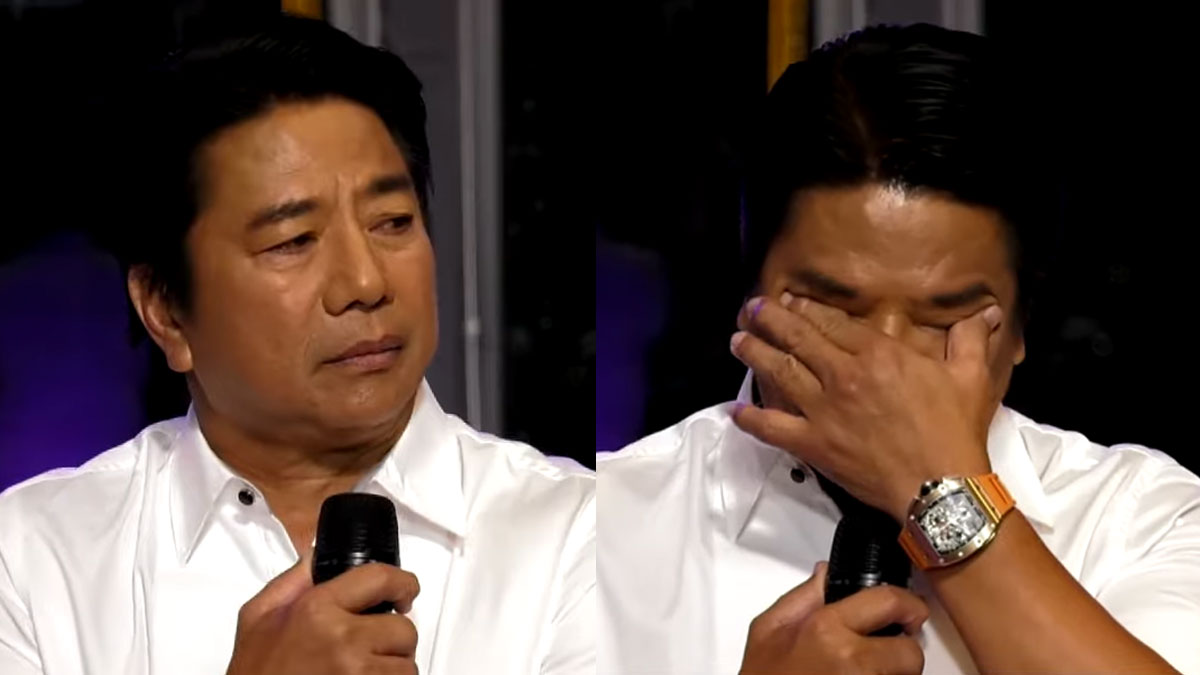He is one of the most recognizable faces in the Philippines, a man who built a legendary television career by giving away money, jackets, and hope to millions of ordinary people. For decades, the public has known him as “Wowowillie,” the charismatic, high-energy game show host who could make an entire studio audience weep and cheer in the same breath. But behind the “bigyan ng jacket” catchphrase and the on-screen antics lies a story of staggering wealth and business acumen that few truly comprehend. The man who famously started with nothing now reportedly owns his own bank, a private island with a helipad, a luxury yacht, and a private helicopter he uses for his daily commute.

This is the story of how a poor boy from Baguio City, who once had nothing to eat and slept under venue stages, meticulously transformed his television fame into one of the country’s most formidable and quietest business empires.
Long before the private jets and the billion-peso estimations, there was just Wilfredo Buendia Revillame. He grew up in poverty, a simple kid from Baguio who knew what it felt like to be hungry. His first taste of the entertainment world wasn’t as a star, but as a humble drummer, playing in small bars and bands, just trying to make enough to get by. He dreamed of getting on television, and his first break came not as a host, but as a comedic sidekick to Randy Santiago. This was the birth of the “Willie Revillame” brand: the goofy, energetic, and relatable personality that audiences would one day adore.

But his rise was far from instant. His early career was a brutal series of ups and downs. He experienced job losses, financial hardship, and controversy. He was often criticized by network management and accused of being arrogant. Many in the industry thought he was finished, a flash-in-the-pan comedian who had missed his chance. What they all underestimated was his iron-clad determination, a resilience forged in his difficult childhood. That resilience would become the capital for his next, and biggest, venture.
The turning point came in 2005 with the launch of “Wowowee” on ABS-CBN. The show was an unprecedented cultural phenomenon. It wasn’t just a game show; it was a daily pilgrimage for the Filipino masses. Willie became a symbol of hope, the man who could, and would, change your life in an instant. As his fame exploded, so did his income. According to industry insiders, the show was a commercial juggernaut, earning an estimated one to two million pesos per day in advertising and sponsorships. Willie, as the show’s heart and soul, commanded a massive percentage of that revenue.
This is where the story shifts. Willie didn’t just spend his new fortune; he immediately began to invest it. He became a tycoon in plain sight. He purchased and built the massive Will Tower Mall in Quezon City, a four-story complex complete with luxury condominium units, high-end restaurants, and, of course, his own state-of-the-art television studio. His garage began to fill up with the toys of the ultra-rich: a Rolls-Royce, a Ferrari, and a fleet of other luxury vehicles. He acquired a private yacht and his now-famous private helicopter, which he uses to fly from his mansion in Quezon City to his stunning resort-style properties in Tagaytay and Batangas.

His journey, however, was nearly derailed by one of the most devastating incidents in Philippine television history. The 2006 “Wowowee” stampede was a profound tragedy that shook the nation. In the aftermath, Willie faced a storm of public scrutiny and professional challenges. This, combined with his recurring issues with network management, led many to believe his career was over for good. The man who had risen so high had fallen just as hard.
But once again, they were wrong. Instead of fading into obscurity, Willie made the boldest move of his life. He left the network and built his own television shows from scratch—”Willing Willie,” “Wowowin,” and others. He proved that he was the brand, not the network. He could stand on his own, and his audience followed him. As his television appearances became more selective, he quietly shifted his focus from being a TV star to being a full-time business magnate.
This is the chapter of his life that most people never see. Today, in 2025, Willie Revillame’s net worth is estimated to be between six and seven billion pesos. This figure, while unconfirmed, is based on a staggering portfolio of assets that continues to grow. He owns a private island in Batangas, complete with its own helipad. He has sprawling mansions in Quezon City and Tagaytay, the latter boasting a private jetty, an infinity pool, and a breathtaking view of Taal Lake. His online shows and YouTube channel still generate millions of pesos a month, but his real wealth comes from his investments, his properties, and his business ventures.

And what about the bank? While it remains one of his most discreet ventures, it is the ultimate symbol of his transformation. The man who once couldn’t afford a bus ticket now owns a financial institution. He has become a visionary, with rumors swirling of his next massive project: a “Will Tower South” in Batangas, a sprawling complex that would combine a hotel, an entertainment hub, and a luxury resort.
The boy who once slept under a stage now owns a helicopter to fly over it. The kid who had no food now gives away millions to feed others. Willie Revillame’s story is a complex one, a rags-to-riches saga of resilience, controversy, and unmatched business savvy. He didn’t just get famous; he leveraged that fame into a billion-peso empire, proving that the man in the “bigyan ng jacket” costume was, all along, one of the sharpest and most unstoppable entrepreneurs in the country.